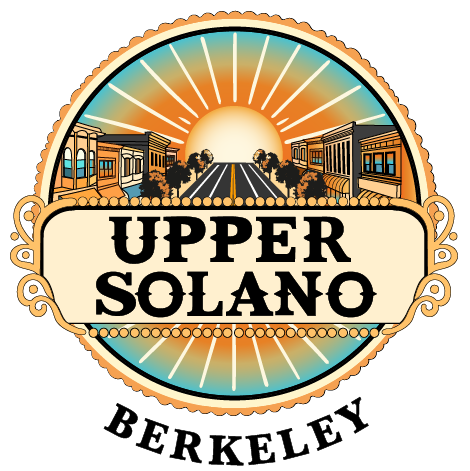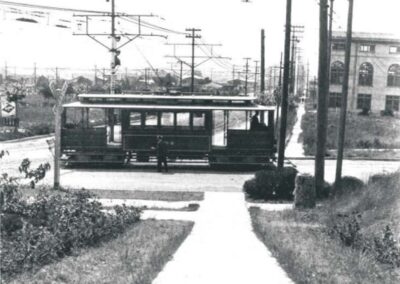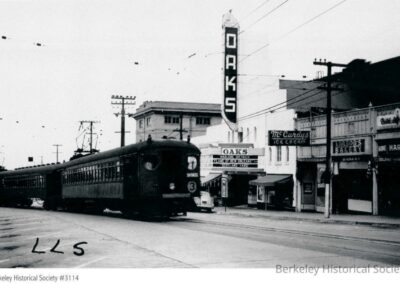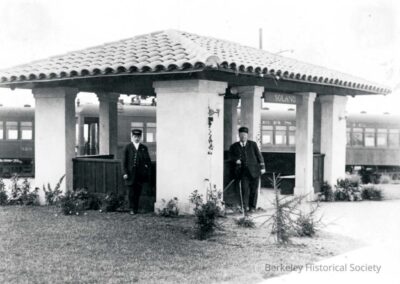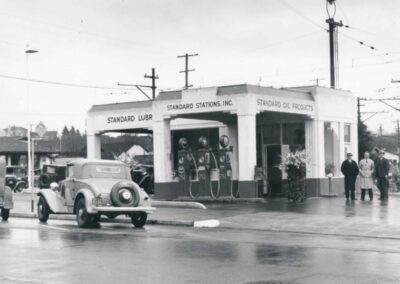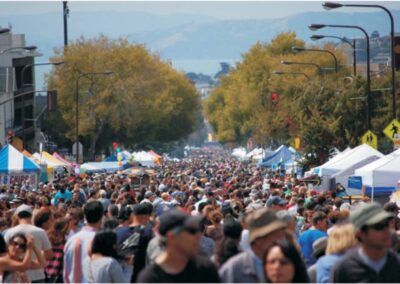The first human occupants of the Upper Solano Berkeley area were the Huchiun Ohlone, formerly called Costanoan Indians. Just north of Solano and The Alameda is a public path that leads uphill to Indian Rock Park and Mortar Rock Park, reminders of the people who have occupied the area for millennia. Arrowheads, ceremonial rocks and other artifacts have been unearthed in the vicinity. Some 800 tribal members live in the Bay Area today.
From 1878 to 1893, Benjamin Boswell and his wife Emma operated a ranch on leased land covering much of present-day Albany, North Berkeley, and El Cerrito to Fairmont Avenue. Solano Avenue was originally a dirt road connecting the Boswell Ranch to the bayside settlement of Ocean View. The street is named for Solano County, in turn named for Suisun chief Solano at the request of General Mariano Vallejo. The portion of Solano Avenue in Albany was originally named “Main Street,” but this was soon changed to conform to the name used in Berkeley.
Growth in the area was facilitated after 1911 by the extension of three electric railroad lines. Upper Solano Avenue was an important hub of the Southern Pacific’s East Bay Electric Lines (later called the “Interurban Electric Railway” after the Bay Bridge was constructed). Three lines intersected at Solano and Colusa Avenues at what was known as the “Colusa Wye”. There was a passenger station at Solano and Colusa. One of the lines, called the “Big Red Cars” used the Northern Tunnel built by Southern Pacific Railroad until it was converted to a roadway in 1941. Other north-south streetcar and train routes operated on San Pablo and Masonic Avenues.
One of the attractions served by the electric trains was the Oaks Theatre, opened in 1925. The movie theater was designed in “modified Moorish” Spanish Colonial style by the Reid brothers, the pair behind San Francisco’s Fairmont Hotel and many other movie palaces. In the mid-1930s it was converted to Art Deco style.
Today Solano Avenue is a vibrant district for local businesses, including restaurants, boutiques, and other retail establishments.
A Brief History of the Solano Avenue Stroll
The Solano Avenue Stroll is the San Francisco East Bay’s oldest and largest free street fair. With 200 participating merchants, 160 community groups, 100 parade entries, 80 craft booths, over 100 entertaining groups representing various countries, and 65 ethnic food booths, the Stroll is one of the few places a family can experience different cultures from around the world for free. It has become the paramount event in Berkeley and Albany, California.
The Stroll is only limited in its length by a tunnel at the uppermost end of Solano Avenue and, at the lower end, the intersection of San Pablo Avenue, which is a state highway that cannot be closed to traffic. Otherwise, the Stroll might continue for several more blocks down the beautiful tree-lined boulevard. Part of the reason for the success of the Stroll is the wonderful physical layout of the district.
The Solano Avenue Stroll was organized in 1974 as a “thank-you” party for customers by the Thousand Oaks Merchant Association led by Lisa Burnham and Ira Klein. As a sidewalk sale on a Friday evening, the Stroll took place on the uppermost blocks of Solano Avenue in Berkeley. In 1981, the Stroll became a daytime family event with a yearly theme. The theme that year, “Soap Box Derby” inspired merchants to build floats, and thus began the parade. It was expanded another eight blocks into Albany to include more and more of the merchants along the street. This was the beginning of the Solano Avenue Association which has a membership of over 200 and presents the Stroll each year.
